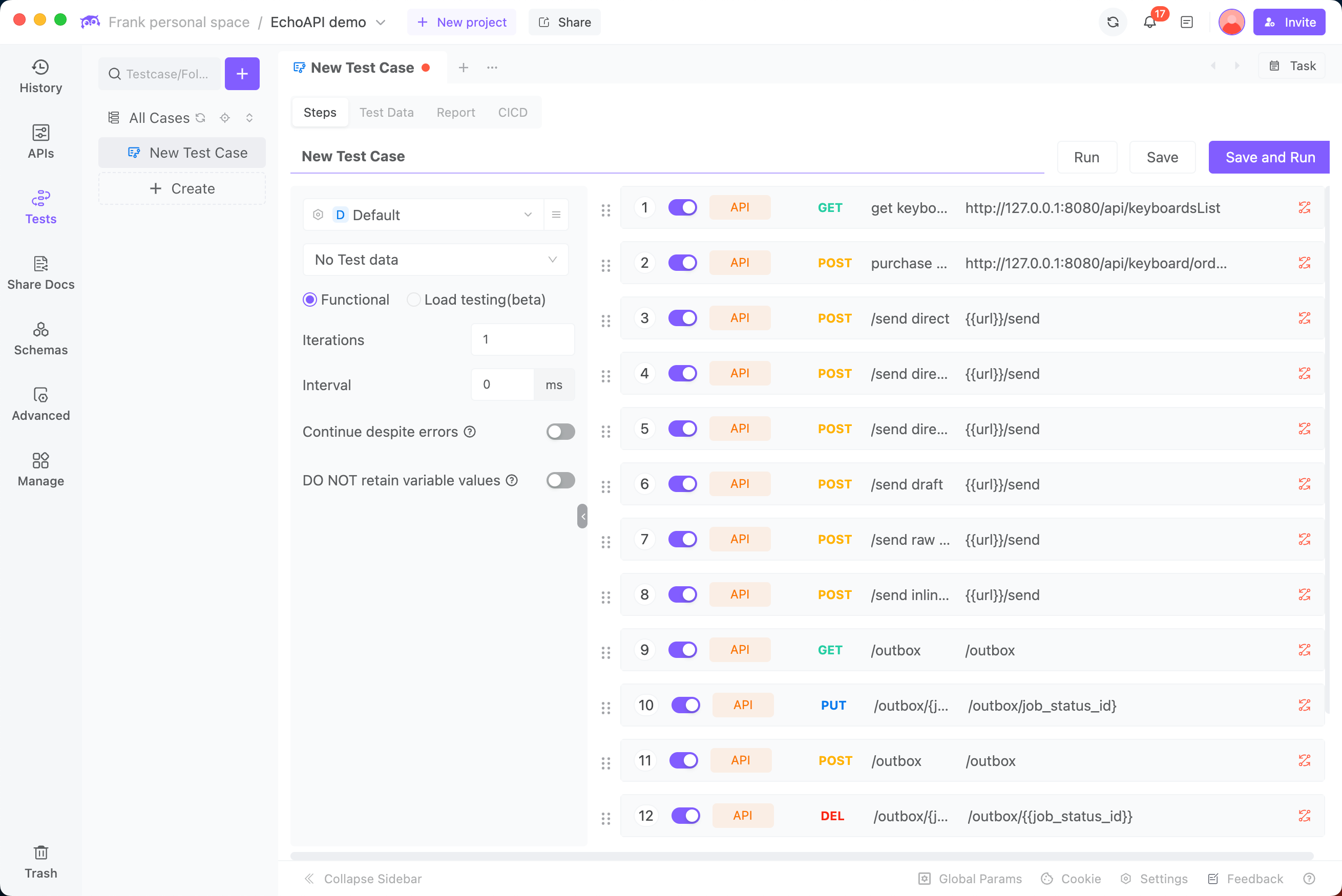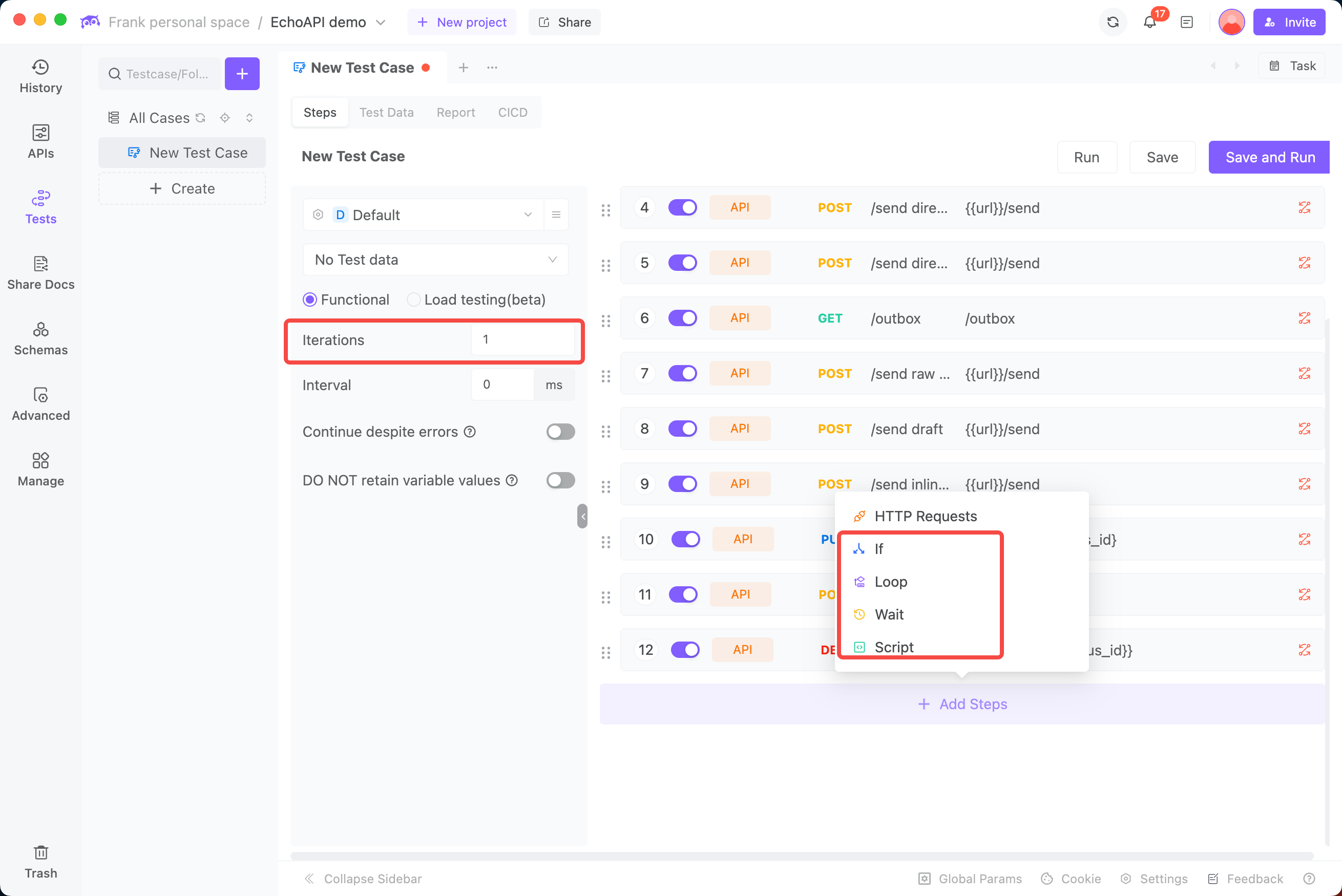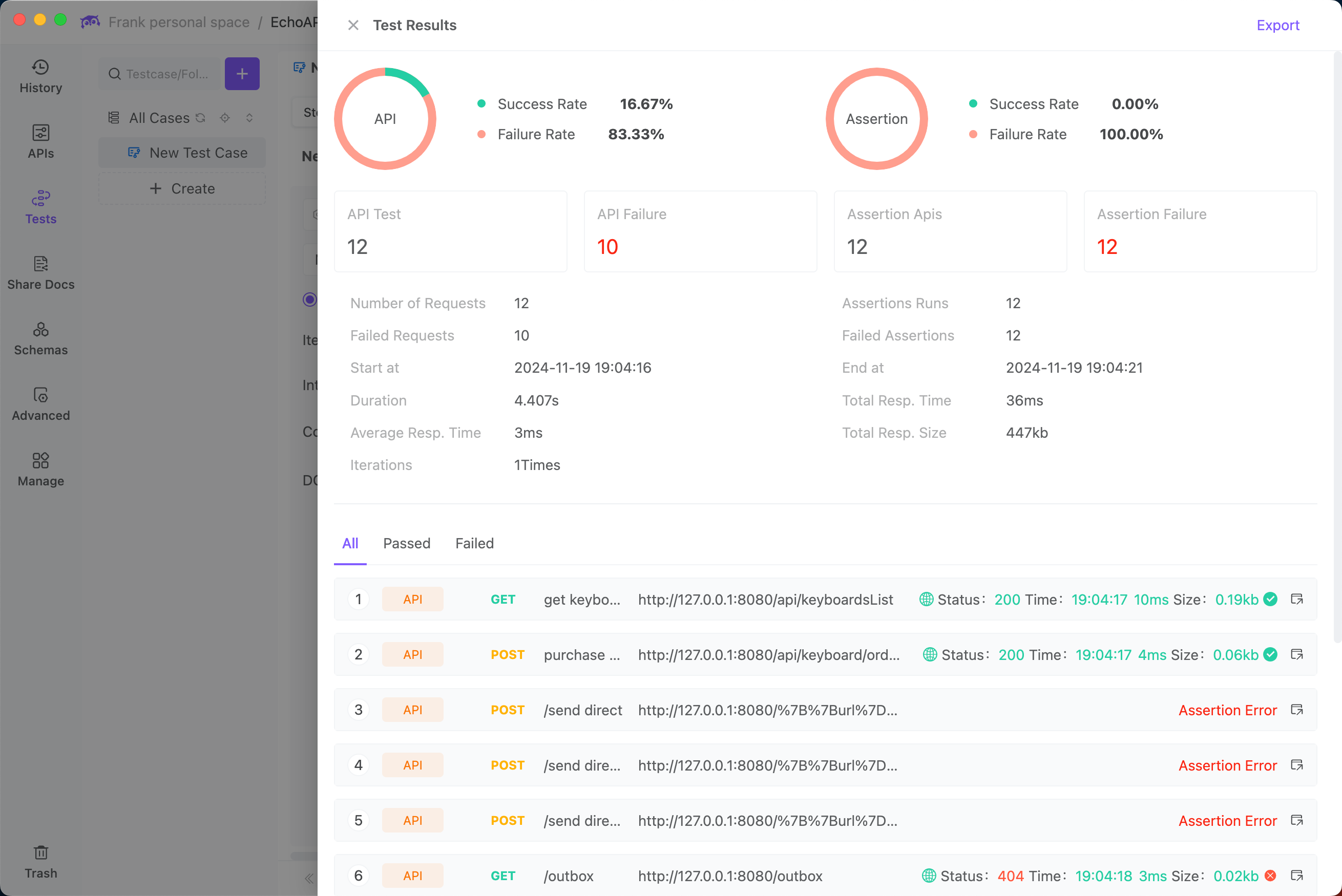In-Depth Analysis: How to implement API scenario testing
In this article, we introduce EchoAPI, the most user-friendly API scenario testing tools. I will demonstrate how to create usage scenarios and operation flows, and how to easily execute tests based on them.
Unlike GUIs, API behaviors are not easily visible, making it effective to conduct scenario tests to verify how APIs operate. In this article, we introduce EchoAPI, the most user-friendly API scenario testing tools. I will demonstrate how to create usage scenarios and operation flows, and how to easily execute tests based on them.
What is Scenario Testing?
Scenario Testing is one of the software testing methods that involves creating typical use cases or workflows a user might encounter while using the software. This type of testing is designed and executed based on these scenarios.
Benefits of Scenario Testing include
- User-Centric Testing: It allows testing from the user's perspective, ensuring that the software meets real-world usage patterns.
- Usability and Use Case Validation: By aligning tests with actual user scenarios, it effectively assesses the software’s usability and verifies that it supports intended use cases.
- High Defect Detection Rate: Scenario testing is effective in identifying defects, making it valuable for improving software quality.
- Effective for User Acceptance Testing: It is particularly useful for user acceptance testing, as it validates that the software meets the users' needs and expectations.
Scenario Testing Process
- Define typical user cases (use scenarios).
- Design test cases based on the scenarios.
- Create test data.
- Execute tests according to the scripts.
- Record the results and evaluate them.
What is API Scenario Testing?
Based on the concept of scenario testing mentioned above, API scenario testing involves designing and executing tests based on typical scenarios in which APIs are utilized. Unlike GUIs, APIs operate in a less visible manner, which makes scenario testing an effective way to verify their functionality. This testing methodology is crucial in API-centric architectures, such as microservices.
In API scenario testing, the following aspects are focused on:
- The sequence of API calls
- Combinations of multiple APIs
- Input and output values of the APIs
- API responses during error conditions
How to Conduct API Scenario Testing
To ensure that the entire flow of your API functions correctly, it is essential to perform API scenario testing. In this guide, we will explain how to conduct API scenario testing in detail. EchoAPI, an API management tool, supports API scenario testing, enabling you to perform API scenario tests more easily than usual.
Please follow the steps below to easily perform API scheme testing in EchoAPI.
Identifying API Usage Scenarios
Before conducting API scenario tests, it is essential to create test flows based on specific use cases. Therefore, the first step is to identify the API usage scenarios.
To identify API usage scenarios, you need to check the requirements definition document and the API specification document to confirm the purpose of the API usage. Then, typical scenarios such as registration, search, and updating should be listed.
Designing Test Scenarios Based on Usage Scenes
Once the API usage scenarios have been identified, you can easily create test scenarios and test flows using EchoAPI.
Step 1:
Select "Tests" from the left menu, then click "Create New Test Scenario" and "Add Step." This allows you to add API calls as test steps.
Note: As a tool proficient in API management, importing all APIs into EchoAPI in advance makes the creation of test flows more efficient.
Step 2
In this module, there is no limit to the number of steps, so you can add as many API calls as needed. After completing the addition of API calls, click the "Run" button to call each API in the order they were added.

Step 3
When creating a test flow, you can set the number of times to repeat test steps, "if" controller, and "loop" controller to adjust the test flow, allowing you to create test scenarios and flows that perfectly fit your needs.

Implementation of API Scenario Tests
By following the steps above, you can create test scenarios and test flows, make necessary adjustments, and perform API scenario tests.
In EchoAPI, set the execution environment, test data, and other items in the execution settings Area panel on the left. Once you've configured everything, click the "Run" button to start implementing the API scenario tests.

Obtaining API Scenario Test Reports
When you perform API scenario tests in EchoAPI, test reports are generated automatically, which is very convenient. Upon completing the scenario tests, you can obtain a test report similar to the following:

This scenario test report allows you to quickly check the basic status of the tests (pass, fail, execution time, etc.). You can also click on each API request for more detailed information. Additionally, there is a feature that allows you to export the test report.
About Scenario testing & coverage testing
Scenario testing and coverage testing are widely used to identify API defects and ensure quality. Let's take a look at the differences between these two testing methods.
Scope of Testing Objects
- Scenario Testing: Focuses on typical usage scenarios and user experience.
- Coverage Testing: Conducts comprehensive testing of requirements.
Testing Design Methods
- Scenario Testing: Designs test cases using scenarios.
- Coverage Testing: Designs test cases from requirements to ensure coverage.
Testing Efficiency
- Scenario Testing: Allows for a focused selection of test cases.
- Coverage Testing: Requires a large number of test cases.
Defect Detection Capability
- Scenario Testing: Excellent at identifying usability defects.
- Coverage Testing: Superior at discovering functional defects.
Timing of Application
- Scenario Testing: Well-suited for acceptance testing.
- Coverage Testing: Ideal for unit and integration testing.
Scenario testing is efficient and excels in user-centric evaluations, but it may lack comprehensive coverage. It’s important to combine both approaches according to the testing goals and phases.
Conclusion
This article explains the importance of API scenario testing and how to implement it.
API scenario testing is effective for confirming API functionality as it allows testing tailored to real-world usage scenarios. To conduct these tests, it is essential to first identify the various API usage scenarios.
Using tools like EchoAPI makes it easy to create test scenarios and workflows. After executing tests, review the results in the test report and utilize them for defect analysis. Since API operations can be less visible, scenario-based testing is crucial. Leveraging tools like EchoAPI is vital for enhancing API quality and reliability. With the rise of microservices architecture, the importance of API scenario testing is expected to increase even further in the future.









 EchoAPI for VS Code
EchoAPI for VS Code

 EchoAPI for IntelliJ IDEA
EchoAPI for IntelliJ IDEA

 EchoAPl-Interceptor
EchoAPl-Interceptor

 EchoAPl CLI
EchoAPl CLI
 EchoAPI Client
EchoAPI Client API Design
API Design
 API Debug
API Debug
 API Documentation
API Documentation
 Mock Server
Mock Server




